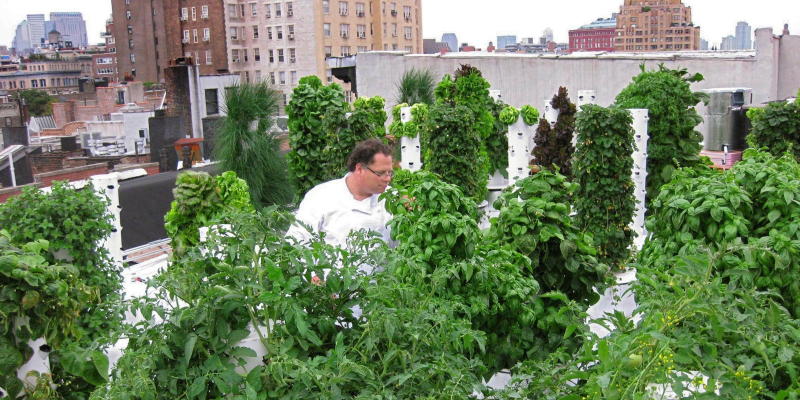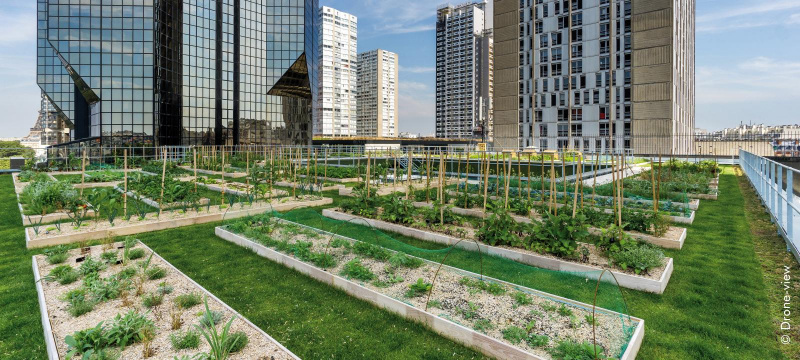Create rooftop gardens and farms
There are several methods besides simply painting roofs white or coating them with reflecting material to make them cooler. There's a lot of unused room up there. It has another advantage when used in spaces where plants are cultivated since it lowers heat absorption and enhances air quality. Within the urban center, greenery in the form of fruits and vegetables can provide fresh produce that is locally cultivated. It is neither fantastical nor a glimpse into the far future. Urban farming and rooftop farming are commonplace in an increasing number of cities.
A Montreal grocery store owner transformed his 25,000-square-foot roof to grow tomatoes, herbs, beets, lettuce, and other crops. Produce from the rooftop farm is packaged and sold in the store below. It is grown on soil and is irrigated by the dehumidification plant of the store. The flat roof of the Dizengoff Center, a sizable mall in Tel Aviv, Israel, holds two enormous greenhouses used for hydroponically grown vegetables. It generates roughly 10,000 heads of lettuce every month throughout the growing season, which are sold to clients outside the mall. It also produces a wide variety of other veggies, and like in Montreal, it gives the buildings below a cooler roof.












